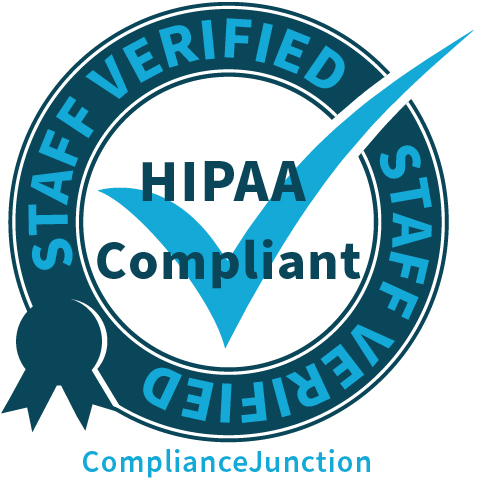
Maximizing Patient Acquisition and Retention in the Healthcare Sector with RevOps
On the heels of 2014’s tighter electronic medical records legislation, the healthcare sector has seen a massive explosion in digital health data acquisition. So much so that RBC Capital Markets projects a 36% CAGR in worldwide healthcare data by 2025; that’s more than finance, manufacturing, and media/entertainment. If the early quarter-century showed us anything, big data presents massive challenges, with patient acquisition and retention at the top of the list. To the extent any business expects to maintain command of its tech stack, it must prioritize data management with unified data syncing and streamlined information-sharing systems.
For healthcare companies, those needs are at a fever pitch.
How Data Headaches Are Affecting Churn Rates
Adding fuel to the fire is high churn rates, which surpass new patient acquisition by 3%. This means current patients (and revenue) leave faster than new ones are introduced, and healthcare companies are eager to apply new data strategies to improve patient retention.
It should come as no surprise that the answer to data management issues and unsustainable churn rates is found with the patients themselves. Counterintuitively, greater attention to patient needs will initially require a hard look at administrative inefficiencies, sapping time away from the more worthy task of improving the quality of care.
Most healthcare providers need a total overhaul of their data sharing systems to keep data management processes in the background. By synchronizing data streams, clinics can make quick, contextual answers readily available, elevating patient care and reducing churn rate.
Are You Tending More to Administrative Processes Than Patients?
As patient records become almost entirely digitized, the error potential grows. The stakes have risen dramatically for data sanitization and privacy, as patient record errors and improper information sharing can occur each time data is synced from one platform to another. This could happen multiple times daily, and many of these services are on the cloud. Even as this potential for mistakes has risen, the margin of acceptable errors hasn’t gotten any wider.
Billing mistakes also raise potential issues, putting revenue at risk for the clinic while raising the possibility of charging patients for services their insurance company is responsible for. Even if the patient catches such errors, it still gives them an unnecessary chore that could leave them looking for a new healthcare provider.
Poor data hygiene, redundant patient info, and account update failures could further result in the following severe issues for clinical practices:
- Sharing sensitive patient information over the wrong contact channel
- Incorrect prescriptions or doses
- Scheduling delays
- Charting mistakes
- Coding errors (whether for billing or lab orders)
- Misidentification of patient records, up to and including misdiagnosis
Whether it’s refining patient services, streamlining billing procedures, or minimizing mistakes, the solution for healthcare providers is the same: refine your data sharing strategy at least as much as you expand your data collection efforts.
As you improve all these efforts, your entire practice will inevitably start serving patients more effectively – and, in turn, maximize patient acquisition and retention rates.
Related: 5 Database Hygiene Best Practices You Can Apply Today
Patient Acquisition and Revenue Health Depends on Clean Data
By optimizing and streamlining your data flow, you’re eventually ensuring the same thing with future revenue. Disruption of one means a loss of the other, especially when there’s a consistent delay between services and billing. These matters are more straightforward for most businesses: keep your eye on the bottom line. In healthcare, that bottom line has mountains of data sitting on top of it.
How well you consistently manage those data mines becomes coequal to how you handle the daily cash flow. Just as a retailer views inventory as cash on the shelf, data has an equivalent value to healthcare companies. As with any heavily data-driven business, this is an advantage because efficiency in data management translates to greater control of incoming and outgoing finances (and that goes especially for dedicated billing offices).
It’s an advantage that eludes most healthcare companies, whose data syncing processes have become unwieldy for the same reason they struggle to address it now: their time has already been stretched thin, even as their workloads increase.
Can RevOps Mend Healthcare Data Integrity?
None of this even covers the equally sobering threat of data security, a persistent problem in the current healthcare sector, according to a recent report.
As such, trust is a significant factor – not to mention costly fines for compliance missteps and the patients watching it all unfold. What can be done about it?
Business-wise, virtually all of these burdens are placed squarely on the shoulders of RevOps leaders. They carry more liability for performance than anyone else in the C-suite, and those in healthcare companies must also contend with legal burdens for insecure tech investment choices.
However they choose to move critical healthcare data through any number of apps and web services, they must select a fully encrypted, secure, and compliant platform to manage their data analysis strategies.
From Greater Data Management to Happier Patients
All RevOps functions improve with a streamlined and more automated data management system. This is only possible with a platform-agnostic data syncing platform that goes beyond point-to-point integration, because the goal must be nothing less than automating your entire tech stack.
Once in place, an integrated tech stack turns a piecemeal collection of native apps into a unified data sharing repository. It also makes the lion’s share of RevOps teams’ duties easier, such as:
- Controlling and protecting sensitive, private data
- Enhancing overall efficiency with accurate, data-driven answers
- Improving the patient experience before, during, and after appointments
- Targeting and personalizing marketing or other engagement strategies (such as with account-based marketing)
- Aligning departments more cohesively for improved collaboration
- Identifying and resolving factors negatively impacting patient retention rates
- Gathering, consolidating, and analyzing all data sources to gain valuable insights into both healthcare billing and client-facing services
More than any other organizational effort, RevOps goes beyond departmental and other boundaries, scrutinizing anything in the path of revenue. This means having a hand on every task where money, and any associated data, moves – and it all begins with the patient.
The patient experience is essential for healthcare professionals, especially in large metropolitan areas. When customers seek a primary care provider, especially at a family clinic, they want to know they’re getting a seamlessly personalized, error-free experience. Customers feel this way even about retailers and other basic services – it’s essential when the “product” is a better health outcome. Necessarily, the margin for error is thinner than ever for healthcare providers.
Related: Data Hygiene and the Cost of Doing Nothing
Balancing Overhead and Service Improvements
With a unified tech stack, you can make better decisions that improve patient services while increasing revenue. Health insurance companies have exemplified this, as they have the additional obligation of tying revenue to the quality of care under the 80/20 rule (or the Medical Loss Ratio).
It limits them to spending only 20% of patient premiums on overhead costs, while the remainder must directly go to healthcare costs and quality improvement efforts. The rule makes no distinction for how thin or wide the company’s margins are, so it’s 100% up to the insurance company to ensure optimal revenue streams – which means optimal data management with it.
It’s an example all healthcare companies can learn from, even if they have no or fewer such spending limitations. Nevertheless, healthcare providers serious about increasing patient acquisition and retention rates will accept the need to improve spending on services while ensuring administrative costs generate maximum ROI.
RevOps as a Service – Revenue Controls With Surgical Precision
Revenue depends equally on data and client satisfaction; there’s no alternative besides enhancing all three. As healthcare patients base purchasing decisions on the deep-seated drive for self-preservation, you know you’re in for the biggest RevOps test of your career. Don’t let the patient quality of care be relegated to an algorithm – especially when the most streamlined data and revenue optimization method is more attainable than ever. Vertify moves mountains of data across native app boundaries seamlessly in the background, so you can focus on serving the patients who alone will keep your business growing. Get started today, and take a bold step towards data-driven decisions and higher patient acquisition.
